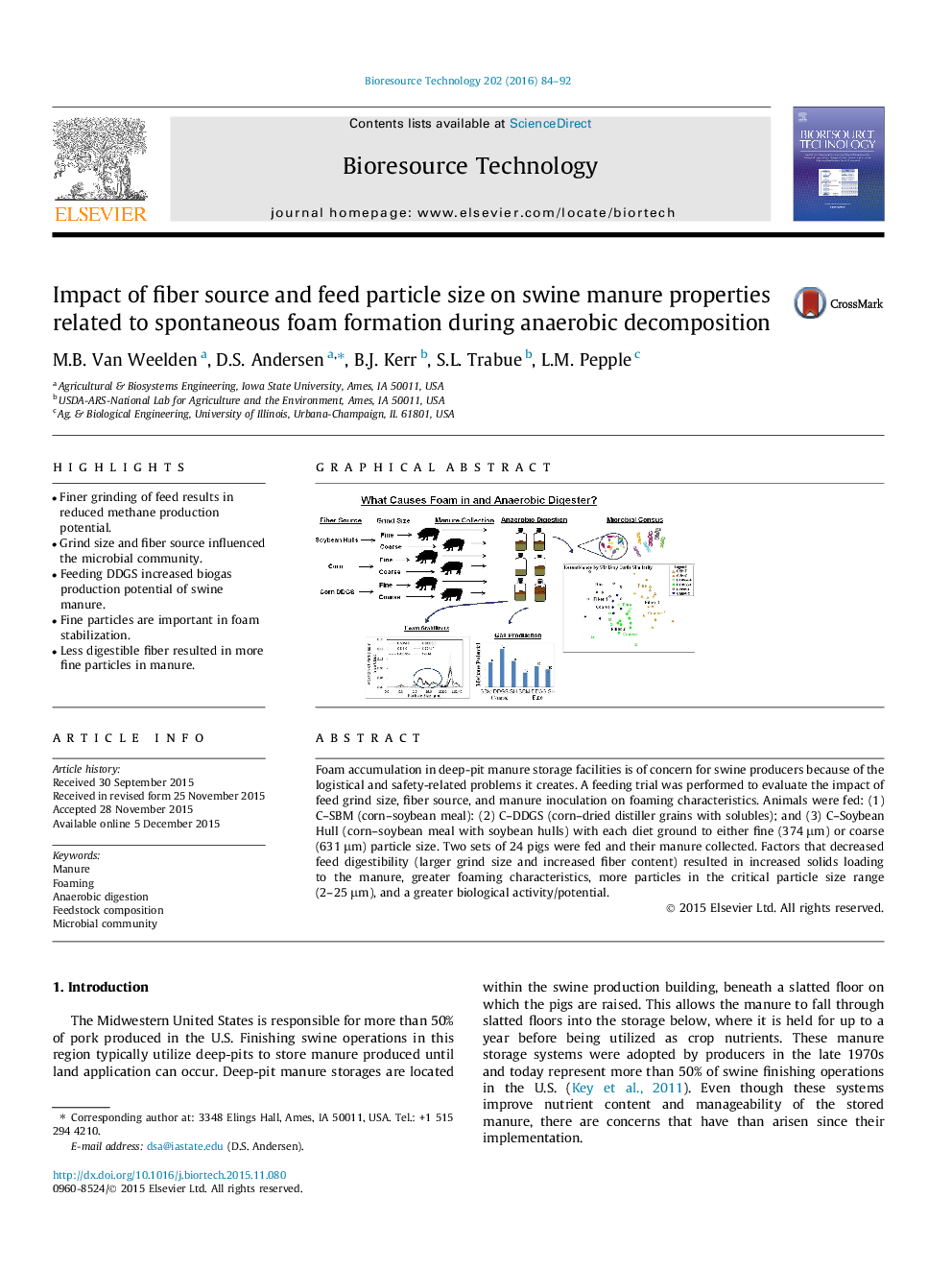| Article ID | Journal | Published Year | Pages | File Type |
|---|---|---|---|---|
| 679297 | Bioresource Technology | 2016 | 9 Pages |
•Finer grinding of feed results in reduced methane production potential.•Grind size and fiber source influenced the microbial community.•Feeding DDGS increased biogas production potential of swine manure.•Fine particles are important in foam stabilization.•Less digestible fiber resulted in more fine particles in manure.
Foam accumulation in deep-pit manure storage facilities is of concern for swine producers because of the logistical and safety-related problems it creates. A feeding trial was performed to evaluate the impact of feed grind size, fiber source, and manure inoculation on foaming characteristics. Animals were fed: (1) C–SBM (corn–soybean meal): (2) C–DDGS (corn–dried distiller grains with solubles); and (3) C–Soybean Hull (corn–soybean meal with soybean hulls) with each diet ground to either fine (374 μm) or coarse (631 μm) particle size. Two sets of 24 pigs were fed and their manure collected. Factors that decreased feed digestibility (larger grind size and increased fiber content) resulted in increased solids loading to the manure, greater foaming characteristics, more particles in the critical particle size range (2–25 μm), and a greater biological activity/potential.
Graphical abstractFigure optionsDownload full-size imageDownload as PowerPoint slide
